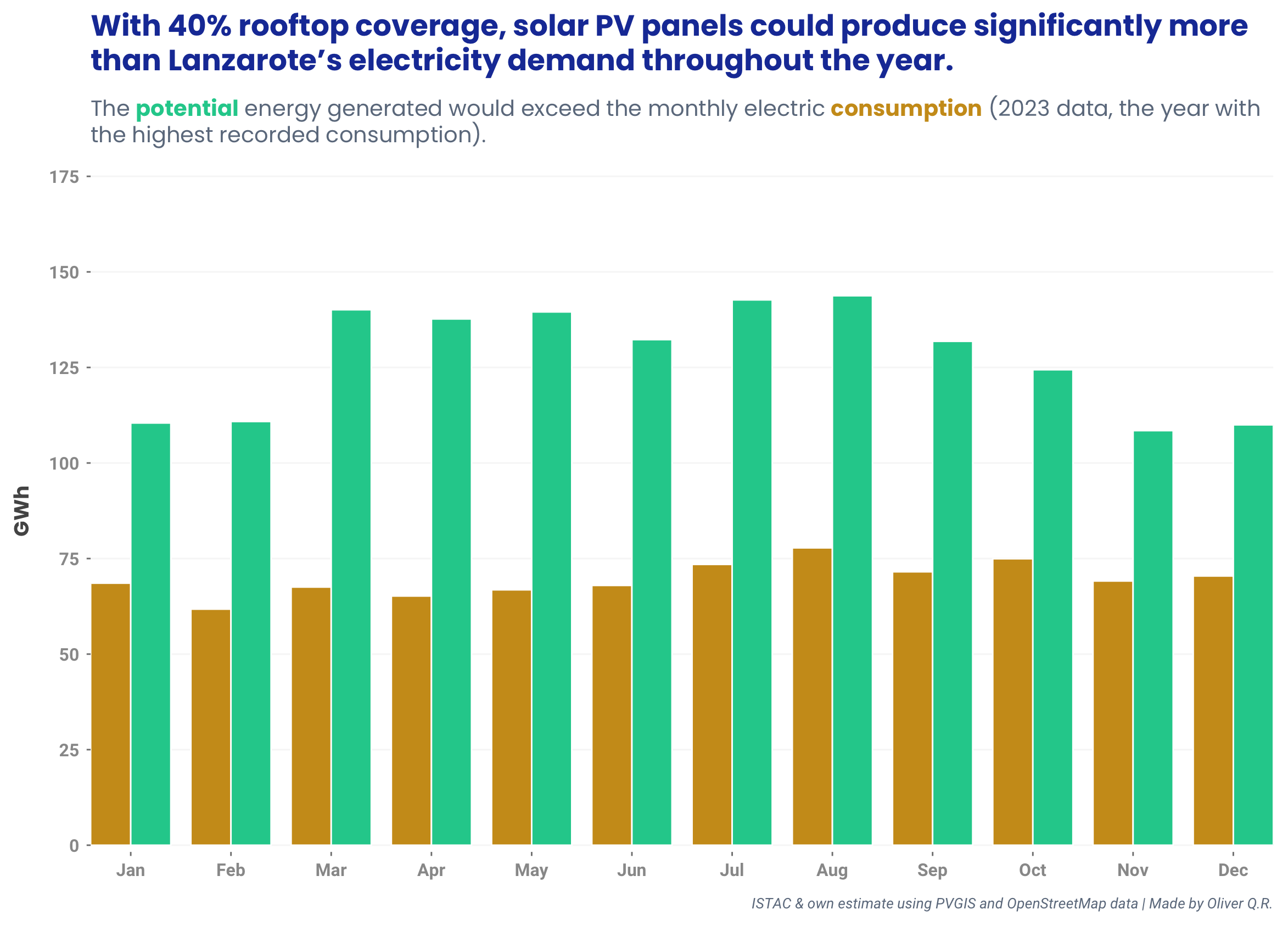Towards a net-zero electric system for Lanzarote: Solar and hydrogen at the core.
Posted onCurrently, over 90% of the electricity consumed in Lanzarote is generated by the Punta Grande thermal power plant. This facility is outdated (by 2031 all but one of its generators will have reached its maximum operational lifespan), highly polluting (accounting for 60% of total emissions of the island), and vulnerable to rising sea levels (Climate Central projections).
Despite its potential, renewable sources cover less than 10% of the electric demand of the island (figure 1). In 2023, wind generated just 8.74% of the total demand (Instituto Canario de Estadística), with solar having a marginal contribution (1.74%).

To revert this trend, the Canary Islands Government has devised a strategy (Plan de Transición Energética de Canarias, PTECan 2030) to guide the energy transition of the archipelago, aiming for full decarbonisation by 2040. However, this plan prioritises the development of large scale wind and solar farms, and designate the areas for their development. While contributing to increase the renewable capacity of the island, the development of such large scale farms will require significant land use and could alter the island's unique landscape. In addition, local and migratory fauna could also be severely affected by wind turbines.
Is there a sustainable alternative with lower impact?
The report below proposes one, inspired by systems trialled in places like Orkney (Scotland), Lolland and Esbjerg (Denmark), which would work as follows:
- Widespread rooftop solar photovoltaic panels across the existing homes and buildings of the islands. Covering 40% of this surface, the island would generate significantly more energy than it actually consumes (figure 2).
- Part of the surplus would be stored in high-capacity batteries, also distributed across the island. These would cover the first hours of night (around 40% of night-time demand).
- The remaining surplus would be used to produce green hydrogen, which would meet the rest of the night-time demand, provide backup on cloudy days, and serve as long-term storage.

The project would require significant financial investment (estimated €3 billion using current and forecast prices). Over a period of 25- to 30-years, the annual investment would be €100-120 million. Funding could come from EU sources (Horizon Europe, Innovation Fund, LIFE Programme, Just Transition Mechanism, Clean Energy for EU Initiative), complemented by local, regional, and national public budget allocations. In addition, Lanzarote Futuro has proposed a tourist tax that could generate €80-100 million annually. Other funding sources could include the creation of a Climate Resilience Tax on high-emission vehicles and activities.
The proposed system would have the potential to create a flexible, decentralised, and resilient electric system based entirely on renewable sources. It would also:
- Increase energy independence.
- Reduce emissions, improving air quality.
- Minimise landscape and biodiversity impact.
- Have the potential to create new job opportunities and help diversify the island's economy.
- Potential to generate income through scaling up green hydrogen production.
- Shift the energy governance of the island towards distributed self-generation, reducing reliance on large utility providers.
- Lower energy costs for end users.
This plan would not only replace fossil fuels entirely, but also has the potential to reshape Lanzarote's electricity system, serving as a model for clean and decentralised energy systems worldwide, particularly for islands and isolated regions.
